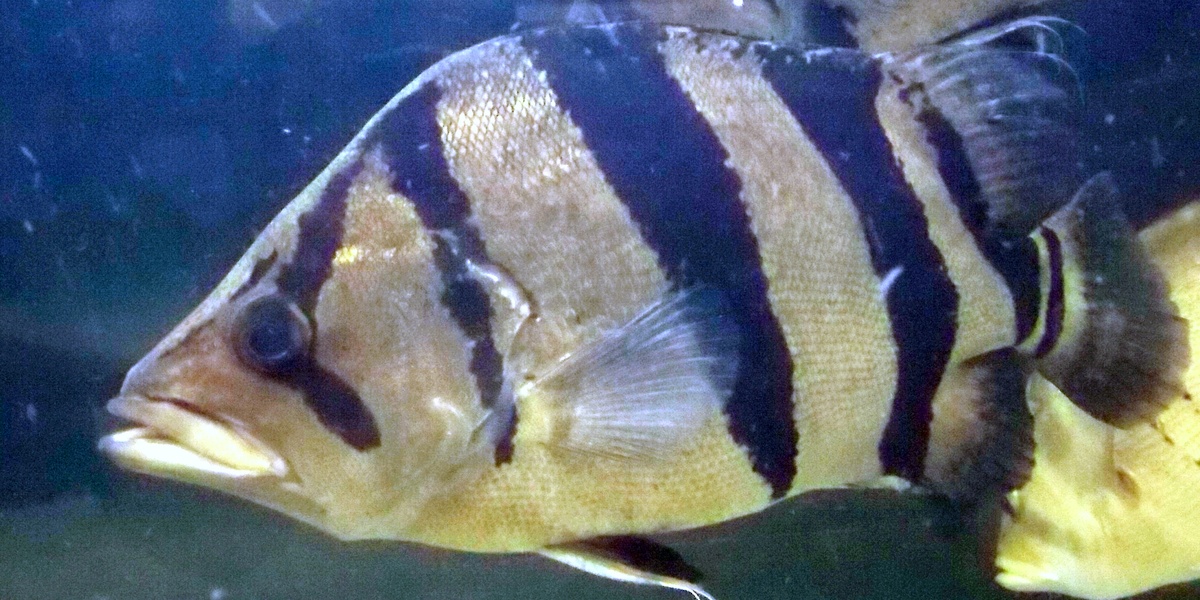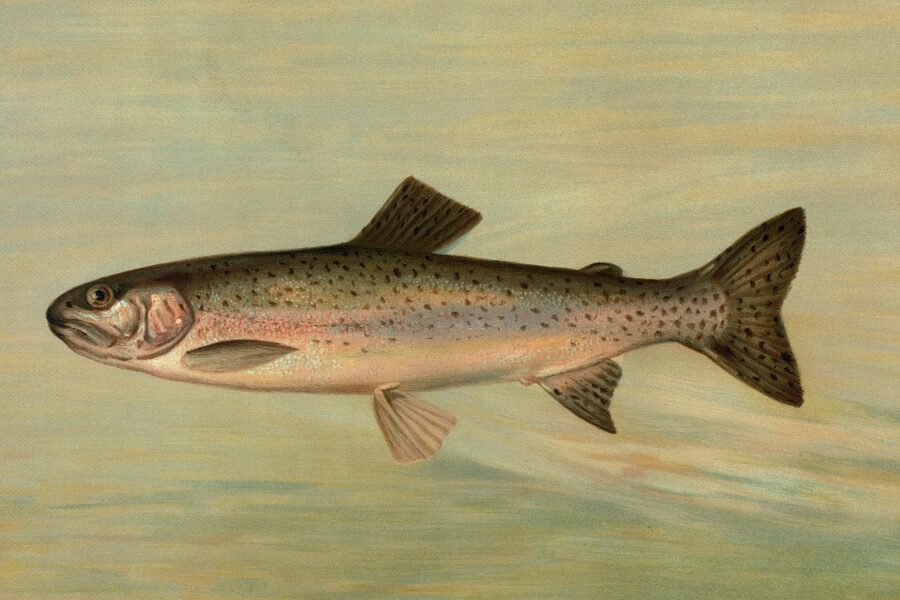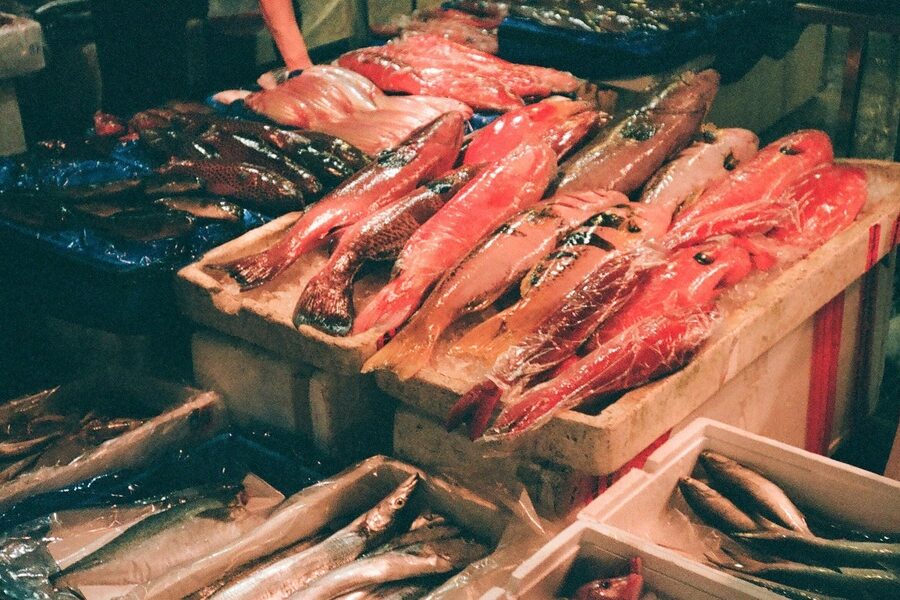Zambia’s rivers, lakes and floodplains support a wide and varied freshwater fauna — from fast-moving Zambezi rapids to quiet backwaters where fish gather. Whether you’re planning fieldwork, angling trips, or just exploring biodiversity, a clear overview of species makes it easier to find what matters.
There are 91 Fish of Zambia, ranging from African Butter Catfish to Zambezi Upside-down Catfish. Each entry is organized with Scientific name,Max length (cm),Where found (Zambia) so you can check identity, typical size and local distribution — you’ll find below.
Where in Zambia are these species most commonly observed?
Most records come from major systems like the Zambezi, Kafue, Luapula and lakes Tanganyika and Mweru, plus their tributaries and seasonal floodplains; smaller rivers and wetlands host locally common species. Use seasonality (dry vs. wet) and habitat type (rapids, pools, floodplain) to narrow likely sightings, and consult local guides or recent survey reports for exact hotspots.
How current and reliable are the size and location details in the list?
The table compiles published records and museum/field survey data, so lengths and distributions are general guides rather than absolute limits; individual specimens can exceed reported max lengths and ranges shift with new surveys. Treat the entries as a starting point and check primary sources or local experts for the latest, site-specific information.
Fish of Zambia
| Common name | Scientific name | Max length (cm) | Where found (Zambia) |
|---|---|---|---|
| Tigerfish | Hydrocynus vittatus | 105 | Zambezi, Kafue, Luangwa rivers, Lake Kariba |
| Vundu | Heterobranchus longifilis | 150 | Zambezi, Kafue, Luangwa rivers, Lake Kariba |
| Three-spot Tilapia | Oreochromis andersonii | 60 | Upper Zambezi, Kafue, and Okavango systems |
| Sharp-toothed Catfish | Clarias gariepinus | 170 | Widespread in most rivers, lakes, and dams |
| Nile Tilapia | Oreochromis niloticus | 60 | Kafue River, Lake Kariba (introduced) |
| Largemouth Bream | Serranochromis robustus | 56 | Upper Zambezi, Kafue, Bangweulu systems |
| Redbreast Tilapia | Coptodon rendalli | 45 | Widespread in Zambezi, Kafue, Luangwa systems |
| Electric Catfish | Malapterurus electricus | 122 | Zambezi, Kafue, Lake Tanganyika |
| African Pike | Hepsetus odoe | 70 | Upper Zambezi, Kafue, Bangweulu systems |
| Cornish Jack | Mormyrops anguilloides | 150 | Zambezi, Kafue, Luangwa rivers |
| Goliath Tigerfish | Hydrocynus goliath | 150 | Lake Mweru, Luapula River (Congo Basin) |
| Giant Cichlid | Boulengerochromis microlepis | 90 | Lake Tanganyika |
| Frontosa Cichlid | Cyphotilapia frontosa | 33 | Lake Tanganyika (Zambian shores) |
| Lake Tanganyika Sardine | Limnothrissa miodon | 17 | Lake Tanganyika, Lake Kariba (introduced) |
| Largemouth Yellowfish | Labeobarbus kimberleyensis | 83 | Upper Zambezi River system |
| Silver Barbel | Schilbe intermedius | 50 | Widespread in major rivers and lakes |
| Eastern Bottlenose | Mormyrus longirostris | 75 | Zambezi, Kafue, Luangwa systems |
| Yellow-belly Bream | Serranochromis macrocephalus | 42 | Upper Zambezi, Kafue systems |
| Zambezi Squeaker | Synodontis zambezensis | 43 | Zambezi and associated river systems |
| African Lungfish | Protopterus annectens | 100 | Upper Zambezi & Kafue floodplains |
| Thinface Bream | Serranochromis angusticeps | 41 | Upper Zambezi, Kafue River |
| Bulldog | Marcusenius macrolepidotus | 32 | Widespread in most river systems |
| Banded Tilapia | Tilapia sparrmanii | 24 | Widespread in rivers and dams |
| Longfin Tilapia | Oreochromis macrochir | 43 | Kafue, Upper Zambezi, Bangweulu systems |
| Humpback Largemouth | Serranochromis altus | 30 | Upper Zambezi |
| Blue-spotted Bream | Serranochromis thumbergi | 30 | Upper Zambezi, Kafue River |
| Rednose Labeo | Labeo altivelis | 40 | Zambezi, Kafue, Luangwa rivers |
| Zambezi Parrotfish | Hippopotamyrus discorhynchus | 31 | Zambezi and Kafue river systems |
| Imberi | Brycinus imberi | 19 | Zambezi, Kafue, Luangwa systems |
| Northern Dwarf-Squeaker | Synodontis nigromaculatus | 39 | Upper Zambezi, Kafue, Mweru systems |
| Banded Jewelfish | Hemichromis elongatus | 20 | Upper Zambezi, Congo basin |
| Tanganyika Perch | Lates mariae | 80 | Lake Tanganyika |
| Kafue Pike | Hepsetus cuvieri | 30 | Kafue River system |
| Zambezi Grunter | Parauchenoglanis ngamensis | 38 | Upper Zambezi, Kafue, Okavango |
| Red-eye Labeo | Labeo cylindricus | 25 | Widespread in rocky river sections |
| Southern Mouthbrooder | Pseudocrenilabrus philander | 13 | Widespread in most systems |
| Green Bream | Sargochromis codringtonii | 39 | Upper Zambezi, Kafue |
| Leopard Squeaker | Synodontis leopardina | 17 | Upper Zambezi system |
| Horseface | Opsaridium zambezense | 25 | Middle & Lower Zambezi, Luangwa |
| African Butter Catfish | Schilbe mystus | 40 | Zambezi, Kafue, Luangwa, Mweru systems |
| Rainbow Cichlid | Sargochromis giardi | 48 | Upper Zambezi, Kafue |
| Tanganyika Clown | Eretmodus cyanostictus | 9 | Lake Tanganyika |
| Blignaut’s Cichlid | Tropheus moorii | 13 | Lake Tanganyika |
| Spotted Killifish | Nothobranchius kafuensis | 6 | Kafue River floodplain |
| Manyspined Climbing Perch | Ctenopoma multispine | 15 | Upper Zambezi, Kafue |
| Purple Labeo | Labeo congoro | 42 | Middle & Lower Zambezi |
| Zambezi River Pipefish | Microphis brachyurus | 22 | Lower Zambezi |
| Banded Bream | Sargochromis carlottae | 27 | Upper Zambezi |
| Golden Dwarf Cichlid | Neolamprologus leleupi | 10 | Lake Tanganyika |
| Tanganyika Eel | Mastacembelus moorii | 40 | Lake Tanganyika |
| Six-barred Distichodus | Distichodus sexfasciatus | 76 | Luapula-Mweru system (Congo Basin) |
| Zambezi Stonebasher | Pollimyrus castelnaui | 11 | Upper Zambezi, Kafue |
| Dwarf Bream | Pharyngochromis darlingi | 21 | Middle & Lower Zambezi, Luangwa |
| Zambezi Upside-down Catfish | Synodontis nebulosus | 15 | Upper Zambezi, Kafue |
| Stargazer Mountain Catfish | Amphilius uranoscopus | 18 | Widespread in rocky, fast-flowing streams |
| Lake Mweru Lampeye | Lacustricola moeruensis | 4 | Lake Mweru |
| Silverfish | Chelaethiops bibie | 10 | Middle and Lower Zambezi |
| Lake Mweru Sprat | Poecilothrissa moeruensis | 5 | Lake Mweru |
| Striped Robber | Brycinus lateralis | 15 | Upper Zambezi, Kafue, Okavango |
| Kafue Killifish | Nothobranchius annectens | 5 | Luangwa valley |
| Okavango Squeaker | Synodontis woosnami | 21 | Upper Zambezi system |
| Threespot Barb | Enteromius trimaculatus | 15 | Widespread in most rivers |
| Cunene Labeo | Labeo annectens | 21 | Kafue River |
| Manyspotted Catfish | Parauchenoglanis punctatus | 26 | Luapula-Mweru system |
| Black-spot Climbing Perch | Microctenopoma intermedium | 7 | Upper Zambezi swamps |
| Copper-nosed Barb | Enteromius poechii | 12 | Upper Zambezi, Kafue, Okavango |
| Meshscaled Topminnow | Aplocheilichthys hutereaui | 4 | Congo and Zambezi systems |
| Red-finned Barb | Enteromius unitaeniatus | 14 | Upper Zambezi, Kafue |
| Brown Squeaker | Synodontis jallae | 17 | Upper Zambezi |
| Striped Topminnow | Aplocheilichthys katangae | 5 | Upper Zambezi, Kafue, Congo systems |
| Plain-body Labeo | Labeo molybdinus | 40 | Upper Zambezi |
| Fork-tailed Robber | Brycinus forskahlii | 40 | Luapula River (Congo Basin) |
| Spiny-fin Cichlid | Pharyngochromis acuticeps | 19 | Upper Zambezi, Kafue, Okavango |
| Black Tilapia | Oreochromis placidus | 35 | Lower Zambezi & Luangwa River |
| Sand Cichlid | Aulonocranus dewindti | 14 | Lake Tanganyika |
| Shortfin Barb | Enteromius brevipinnis | 8 | Upper Zambezi |
| Copper-striped Barb | Enteromius miolepis | 12 | Luapula River (Congo Basin) |
| Long-nosed Citharine | Citharinus gibbosus | 50 | Luapula-Mweru system |
| Liemba Killi | Lamprichthys tanganicanus | 15 | Lake Tanganyika |
| Broad-striped Barb | Enteromius annectens | 9 | Upper Zambezi |
| Blotched Catfish | Clarias stappersii | 40 | Bangweulu, Mweru, Upper Chambeshi systems |
| Congo Robber | Brycinus grandisquamis | 16 | Luapula-Mweru system |
| Zambezi Kneria | Kneria wittei | 7 | Zambezi headwaters |
| Plain Squeaker | Synodontis unicolor | 25 | Lake Mweru, Luapula River |
| Luapula Sardine | Mesobola moeruensis | 9 | Luapula-Mweru, Bangweulu systems |
| Moustache Catfish | Synodontis vanderwaali | 16 | Upper Zambezi |
| Short-tail Pipefish | Microphis aculeatus | 16 | Lower Zambezi |
| Many-lined Barb | Enteromius multilineatus | 8 | Upper Zambezi, Kafue, Bangweulu systems |
| Halfbeak | Hemirhamphodon phaiosoma | 7 | Upper Zambezi |
| Spotted Sleeper Goby | Kribia welwitschii | 5 | Upper Zambezi |
| Luapula Alestes | Brycinus imberi | 19 | Luapula River |
Images and Descriptions
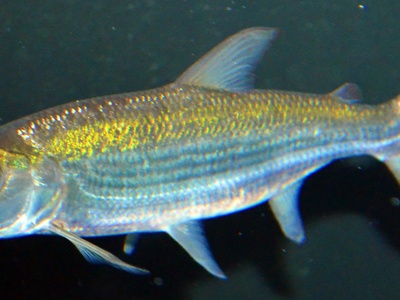
Tigerfish
Zambia’s most iconic sport fish, famed for its ferocious teeth and powerful, acrobatic fight. A true river monster, it preys on other fish and is a top target for anglers seeking a thrilling catch.
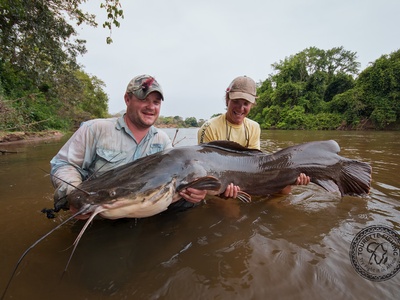
Vundu
Africa’s largest true freshwater fish, this giant catfish is a bottom-dwelling scavenger and predator. Its immense size and strength make it a legendary, though challenging, catch for dedicated anglers.
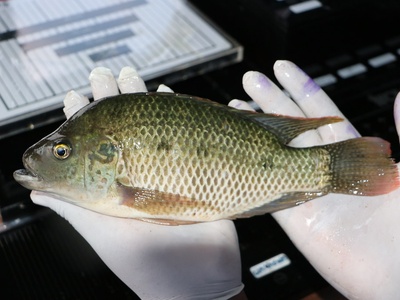
Three-spot Tilapia
A popular angling “bream” and a crucial food fish in local communities. Easily identified by the three distinct spots along its side, especially visible when young. It is a robust and widespread species.
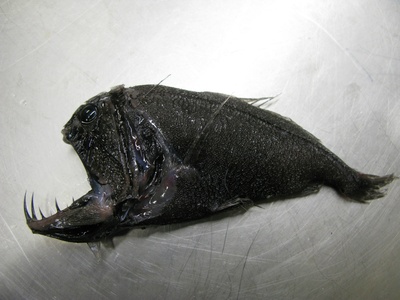
Sharp-toothed Catfish
Known locally as “barbel,” this highly adaptable, air-breathing catfish can survive in poor conditions. It is a vital species for both aquaculture and local fisheries due to its hardiness and rapid growth.
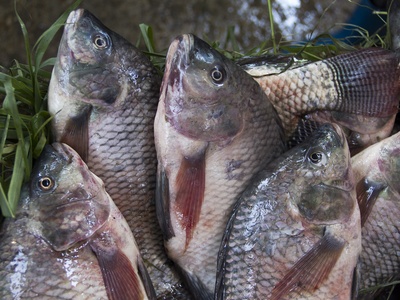
Nile Tilapia
Though not native to all systems, this tilapia has become a cornerstone of aquaculture and capture fisheries. It is a fast-growing, adaptable species that provides a key source of protein across the country.
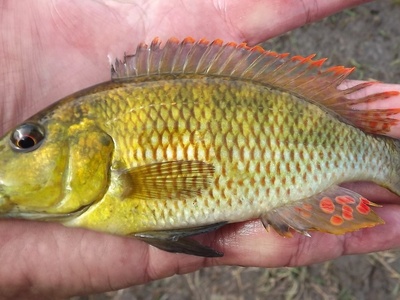
Largemouth Bream
Often called Nembwe, this is a large, predatory cichlid prized by sport fishermen. Known for its aggressive strike and powerful fight, it is a top target for lure and fly anglers in Zambia.
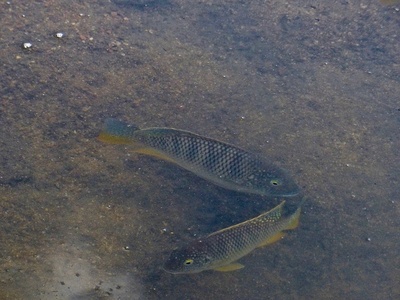
Redbreast Tilapia
A deep-bodied bream known for the vibrant red-orange throat and chest on breeding males. It primarily feeds on plants and is a popular catch for both sport and subsistence fishers in vegetated areas.

Electric Catfish
A unique, sluggish predator capable of generating a powerful electric shock of up to 350 volts. It uses this ability for both stunning prey and defending itself from other predators.
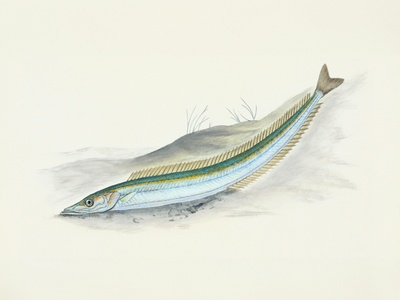
African Pike
A voracious, pike-like predator with a mouth full of dagger-sharp teeth. It is an aggressive ambush hunter that lurks in vegetation, striking at any smaller fish that swims by.

Cornish Jack
A large, predatory elephantfish with a weak electric sense used for hunting in murky water. Its elongated body and nocturnal habits make it an unusual and powerful catch for anglers.
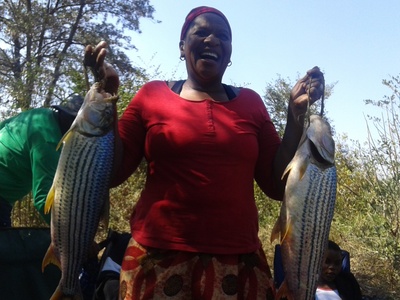
Goliath Tigerfish
The largest and most fearsome tigerfish species, found in Zambia’s Congo basin waters. A legendary predator with oversized teeth, it is considered one of the ultimate freshwater trophies for extreme anglers.
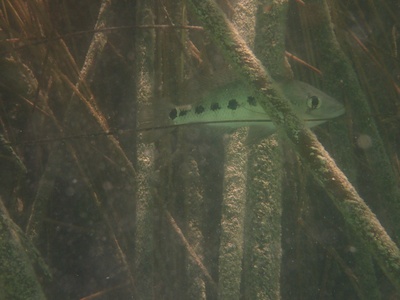
Giant Cichlid
The world’s largest cichlid, this formidable predator is endemic to Lake Tanganyika. It is a prized food fish and a remarkable sight, often seen in pairs guarding vast nests of their young.
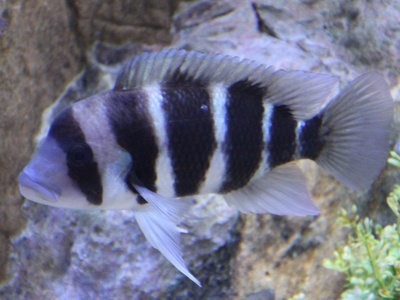
Frontosa Cichlid
A striking, deep-water cichlid with bold vertical bars and a large nuchal hump on its head. It is highly sought after by aquarium enthusiasts worldwide for its majestic appearance and calm demeanor.

Lake Tanganyika Sardine
Known as Kapenta, this small, silvery fish forms the basis of a massive commercial fishery. They are caught at night using lights and are a vital source of protein, often dried and sold in markets.
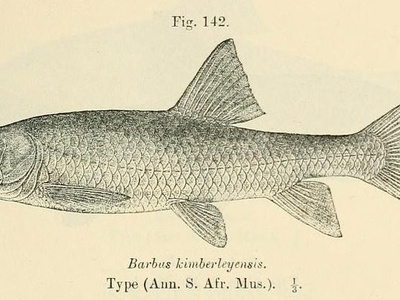
Largemouth Yellowfish
A large, powerful cyprinid and one of southern Africa’s premier indigenous sport fish. Prized for its strong, sustained runs, it is a challenging and rewarding catch, particularly for fly-fishermen.
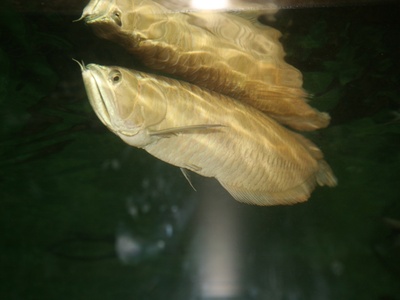
Silver Barbel
A predatory, shoaling catfish with a silvery, laterally compressed body. Often called a “butter barbel,” it is an aggressive hunter of small fish and is frequently caught by local fishermen.

Eastern Bottlenose
A large, fascinating mormyrid with a long, downward-curved snout resembling an elephant’s trunk. It uses this snout to probe the riverbed for insects, emitting a weak electric field to find them.
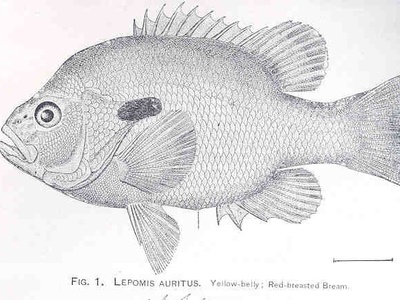
Yellow-belly Bream
A popular angling cichlid, also known as the Purple-faced or Pink Bream. It is a predator distinguished by its large head and the beautiful, colorful breeding dress of the males.
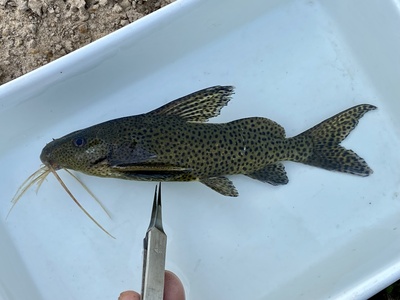
Zambezi Squeaker
A medium-sized, attractively patterned member of the “upside-down catfish” family. It gets its name from the squeaking sounds it produces by grinding its pectoral fin spines when caught or distressed.

African Lungfish
An incredible air-breathing fish that represents an ancient lineage. During the dry season, it can survive for months or even years by burrowing into the mud and forming a protective cocoon.

Thinface Bream
A slender predatory cichlid with a characteristically narrow head and elongated jaw. This specialized anatomy helps it hunt small fish in dense vegetation, making it a unique target for anglers.

Bulldog
A common elephantfish with a rounded, downward-pointing snout and small mouth. It navigates and communicates in murky waters using weak electric organ discharges, a fascinating adaptation.
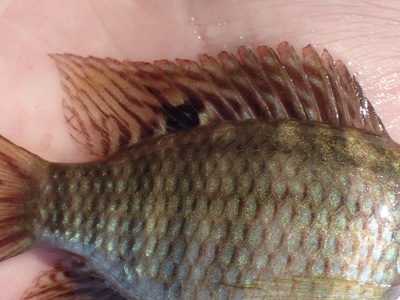
Banded Tilapia
A small, hardy, and colourful cichlid often found in heavily vegetated waters. While not a primary angling target due to its size, its striking appearance makes it popular in the aquarium hobby.
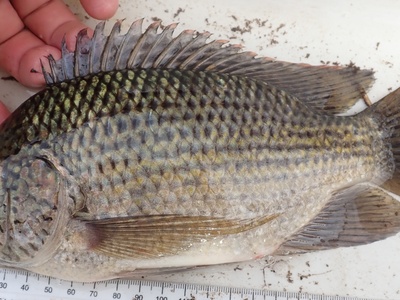
Longfin Tilapia
A key commercial and angling species, particularly famous in the Kafue Flats fishery. Males are distinguished by their elongated dorsal fins and bright breeding colors, making them a beautiful catch.
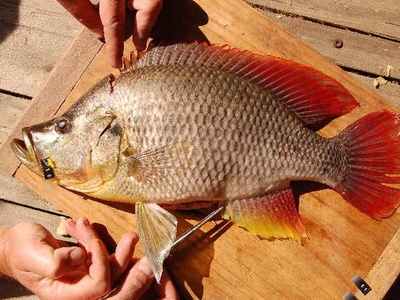
Humpback Largemouth
A deep-bodied predatory cichlid with a distinctive hump profile behind its head, especially in adult males. It is a powerful fighter and a valued catch for anglers exploring the Upper Zambezi.

Blue-spotted Bream
A beautiful predatory cichlid, especially the breeding males which display iridescent blue spots on their flanks and fins. It is a sought-after angling catch due to its striking appearance and aggressive nature.

Rednose Labeo
A large cyprinid known for its distinctive reddish snout and for grazing on algae from rocks. This species undertakes impressive upstream migrations to breed during the flood season, gathering in large numbers.

Zambezi Parrotfish
A unique mormyrid with a bulldog-like face and a mouth located on the underside of its head. It uses a weak electric field to sense its surroundings and locate invertebrate prey in the riverbed.

Imberi
A small to medium-sized characin, often found in active shoals in the main river channels. It is an important part of the riverine food web, feeding on insects and in turn being prey for larger fish.

Northern Dwarf-Squeaker
A widespread and common squeaker catfish, easily identified by its dark body covered in numerous black spots. It is a hardy and adaptable bottom-dweller, often active at night.
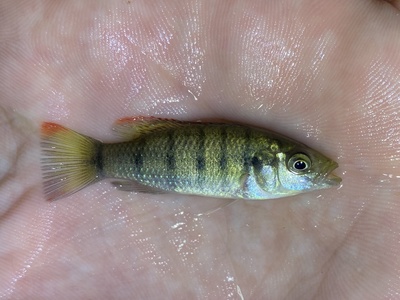
Banded Jewelfish
A stunningly beautiful but highly aggressive and predatory cichlid. Known for its intense red coloration and fearless nature, it is a formidable small predator that exhibits devoted parental care.

Tanganyika Perch
A large, powerful predator closely related to the famous Nile Perch. It is an important commercial and sport fish endemic to Lake Tanganyika, where it hunts other fish in the deep, rocky habitats.

Kafue Pike
A smaller, more slender relative of the common African Pike. This voracious predator is endemic to the Kafue and Upper Zambezi systems, where it ambushes prey from its hiding spots in aquatic vegetation.
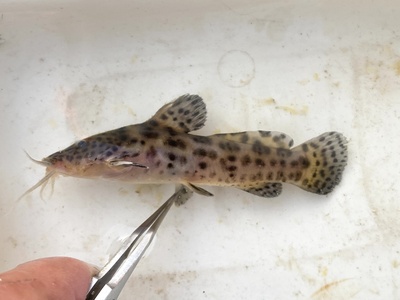
Zambezi Grunter
A robust, predatory catfish with a large mouth and mottled pattern that provides excellent camouflage. It often hides in rocky or vegetated areas, ambushing small fish and crustaceans.

Red-eye Labeo
A cylindrical-bodied algae-eater with prominent red eyes, perfectly adapted for life in fast-flowing water. Its specialized mouth allows it to scrape algae from rocks in strong currents.
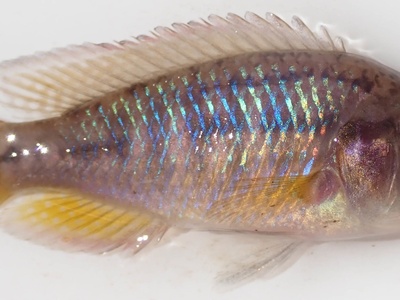
Southern Mouthbrooder
A small, colorful, and highly adaptable cichlid found in almost every type of water body. The female displays remarkable parental care by incubating her eggs and sheltering the fry in her mouth.

Green Bream
A large, robust cichlid specialized in eating hard-shelled snails. It possesses powerful jaws and molar-like pharyngeal teeth to crush its prey, occupying a unique ecological niche.
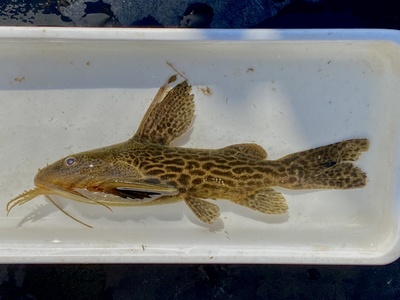
Leopard Squeaker
A beautifully patterned squeaker from the Upper Zambezi with distinct, leopard-like spots covering its body. Its striking appearance makes it a desirable species for aquarium enthusiasts.

Horseface
A predatory, trout-like cyprinid found in the fast-flowing, rocky sections of rivers. Its streamlined body and aggressive feeding habits make it an exciting target for fly-fishermen in rapids.
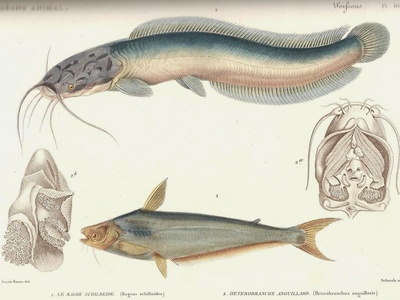
African Butter Catfish
A common, shoaling predatory catfish with a strong fork in its tail and a silvery sheen. It is an important species in local fisheries and is known for its active, mid-water hunting behavior.
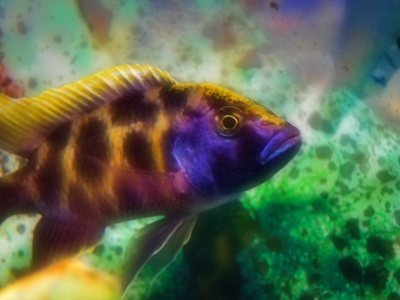
Rainbow Cichlid
A large and beautifully colored cichlid that feeds on a mixed diet of plants, insects, and snails. It is prized by anglers for its size, beauty, and the good fight it puts up when hooked.

Tanganyika Clown
A comical, goby-like cichlid that hops and darts along the rocky lake bottom. It has specialized teeth for scraping algae and is known for its unique movement and territorial behavior.

Blignaut’s Cichlid
A colorful and highly sought-after rock-dwelling cichlid from Lake Tanganyika. Famous among aquarists for its vibrant color morphs, complex social behavior, and specialized diet of algae.

Spotted Killifish
A brilliantly colored annual killifish whose eggs can survive the dry season buried in the mud. With the arrival of rains, they hatch, grow, and reproduce rapidly in temporary pools before they dry up again.

Manyspined Climbing Perch
An amazing air-breathing fish capable of traveling over land between water bodies. It uses its spiny gill plates to “walk,” allowing it to colonize new pools during the wet season.
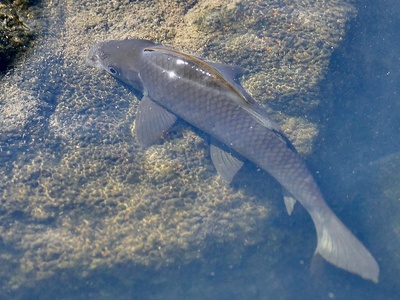
Purple Labeo
A large, powerful cyprinid with a distinct purplish sheen, found in the main channels of large rivers. Known for its strength, it provides a formidable challenge for anglers targeting it.

Zambezi River Pipefish
A unique, eel-like fish related to seahorses that lives among vegetation in freshwater. In a reversal of roles, the male becomes “pregnant,” carrying the eggs in a brood pouch on his underside.

Banded Bream
A specialized cichlid that feeds mainly on snails, using its powerful pharyngeal jaws to crush their shells. It is recognized by the faint vertical bands on its body and is a unique member of its ecosystem.

Golden Dwarf Cichlid
A small, cave-dwelling cichlid from Lake Tanganyika, famous for its brilliant, uniform yellow or orange coloration. Its vibrant color and active nature make it a jewel for aquarium keepers.

Tanganyika Eel
A true spiny eel with a pointed, fleshy snout used to probe for invertebrates among the rocks. It is a nocturnal hunter and a fascinating example of specialized evolution in the great lake.

Six-barred Distichodus
A large, deep-bodied characin with striking juvenile coloration of six dark vertical bars. It is a popular but aggressive aquarium fish that grows very large and feeds on plants and invertebrates.

Zambezi Stonebasher
A small, common mormyrid that gets its name from its habit of “bashing” its nose into the substrate. It uses its weak electric field to detect insect larvae and other food items hidden in sand or mud.

Dwarf Bream
A small but feisty predatory cichlid, common in a wide variety of riverine habitats. It is an adaptable generalist, feeding on insects, crustaceans, and small fish.
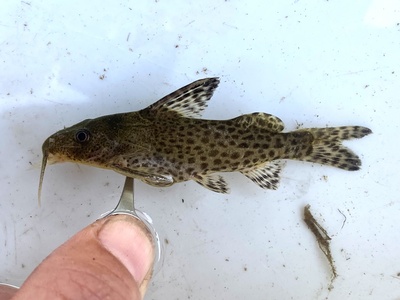
Zambezi Upside-down Catfish
A smaller squeaker with a mottled, cloudy pattern that provides excellent camouflage. Like many in its genus, it often swims upside-down to feed from the water’s surface or the underside of logs.

Stargazer Mountain Catfish
A small, flattened catfish perfectly adapted to life in rapids. Its eyes are positioned on top of its head, giving it a “stargazing” appearance as it clings to rocks in the current.

Lake Mweru Lampeye
A tiny, shoaling killifish known for the bright, iridescent spot above its eye that resembles a tiny lamp. These small fish are an important food source for larger predators in the Lake Mweru ecosystem.
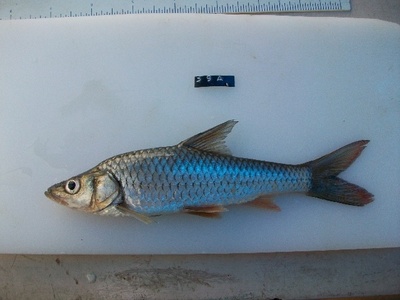
Silverfish
A small, silvery, surface-dwelling cyprinid that often forms large, shimmering schools in the main river channels. It feeds primarily on terrestrial insects that fall onto the water’s surface.

Lake Mweru Sprat
A tiny, shoaling freshwater herring that is a crucial food source for larger predatory fish like the Goliath Tigerfish. It forms the base of the food web in the pelagic zone of Lake Mweru.

Striped Robber
A small, active characin with a prominent dark horizontal stripe running the length of its body. It is often seen in large, fast-moving schools in clear, well-oxygenated water.
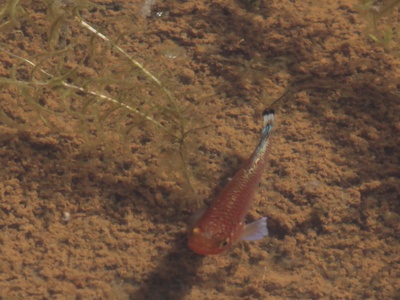
Kafue Killifish
A small, brilliantly colored annual killifish adapted to life in ephemeral rainwater pools. The males are incredibly vibrant, performing elaborate displays to attract females during their short lifespan.
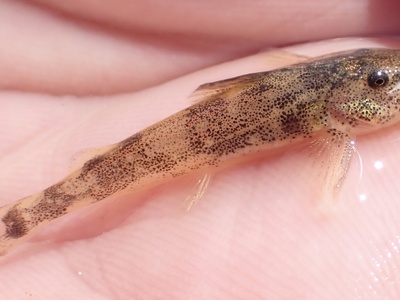
Okavango Squeaker
A distinctive squeaker with a dark, net-like pattern on a light background. It is well-adapted to the sandy bottoms of the Upper Zambezi and nearby systems, where it forages at night.

Threespot Barb
A small, silvery barb with three distinct black spots along its flank, though they can be faint. It is a common and important species in floodplains, serving as food for larger fish and birds.
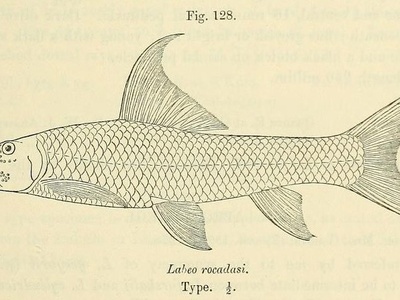
Cunene Labeo
A smaller labeo species that is typically found grazing on algae and detritus on the river bottom. It plays an important role in keeping rocks clean, contributing to the health of the river ecosystem.

Manyspotted Catfish
A strikingly spotted catfish from the Congo basin drainage area of Zambia. It is a secretive, ambush predator that hides among rocks and submerged vegetation, waiting for unsuspecting prey.

Black-spot Climbing Perch
A small labyrinth fish, related to gouramis, that possesses an organ allowing it to breathe atmospheric air. This adaptation enables it to thrive in poorly oxygenated swamps and even move over damp land.

Copper-nosed Barb
A common barb species often found in large shoals in swamps and floodplain lagoons. It is an important forage fish and is recognized by the coppery sheen on its snout.

Meshscaled Topminnow
A tiny, surface-dwelling fish that feeds on mosquito larvae and other small insects at the water’s surface. It is often found in the calm, vegetated margins of streams and swamps.
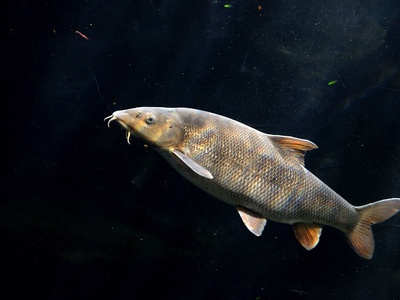
Red-finned Barb
A sleek barb with a single horizontal stripe and reddish fins, particularly during breeding season. It is common in flowing rivers and associated floodplains, often schooling in large numbers.
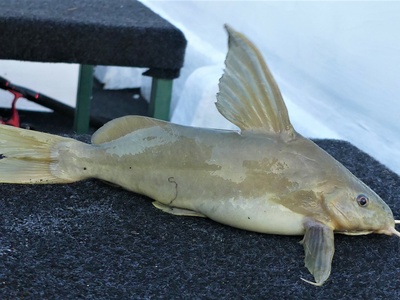
Brown Squeaker
A small, secretive squeaker found amongst rocks and dense vegetation in the Upper Zambezi system. Its mottled brown coloration provides excellent camouflage against the riverbed.

Striped Topminnow
A small, surface-feeding fish with a distinct dark stripe running from its snout to its tail. It plays a role in controlling insect populations in the quiet, swampy margins of rivers.

Plain-body Labeo
A large, plain-colored cyprinid that uses its specialized mouth to graze on algae-covered rocks in the main river channels. It is a powerful swimmer adapted to strong currents.

Fork-tailed Robber
A larger, fast-swimming characin found in the open waters of large rivers and lakes in the Congo system. It is an active predator of small fish and insects, often forming shoals.

Spiny-fin Cichlid
A predatory cichlid with a pointed snout and a feisty disposition. It is an adaptable hunter, feeding on a wide variety of prey including insects, snails, and small fish.

Black Tilapia
A tilapia species native to the lower Zambezi system, where it is an important food fish for local communities. The breeding males develop a dark, almost black coloration.
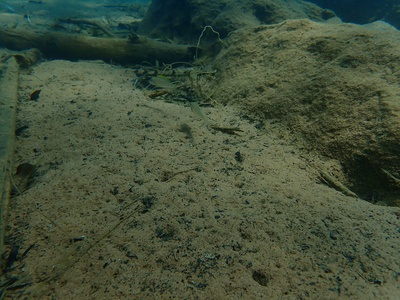
Sand Cichlid
A unique sand-dwelling cichlid from Lake Tanganyika. It feeds by taking mouthfuls of sand and sifting it through its gills to extract small invertebrates, leaving distinctive pits on the lake floor.
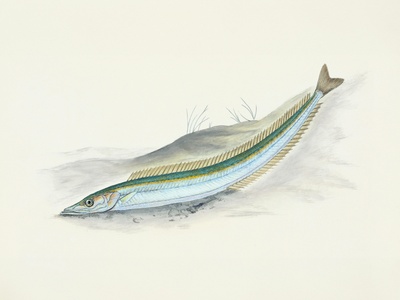
Shortfin Barb
A small, silvery barb with relatively short fins, found in the quiet backwaters and floodplains of the Upper Zambezi. It is a peaceful, shoaling species that feeds on tiny invertebrates.

Copper-striped Barb
A small barb from the Congo system with a distinct, iridescent copper-colored stripe. It is typically found in small, clear forest streams with sandy or muddy bottoms.

Long-nosed Citharine
A very deep-bodied, silvery fish with a small head and a humped back profile. It is a detritivore, using its small mouth to ingest mud and organic ooze from the bottom of rivers and lakes.

Liemba Killi
A stunningly beautiful, open-water schooling killifish from Lake Tanganyika, often called the “Tanganyika Killifish.” Its iridescent scales make it one of the most attractive freshwater fish in the world.

Broad-striped Barb
A small barb with a distinct, broad dark stripe running along its body. It is typically found in well-vegetated, swampy areas and the quiet margins of rivers.
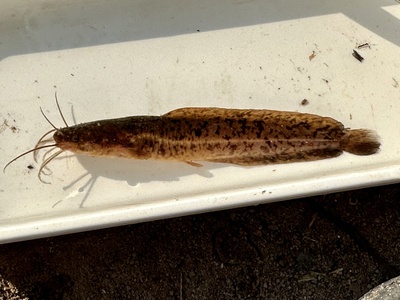
Blotched Catfish
A medium-sized air-breathing catfish from the Congo drainage area of Zambia. It is distinguished from other Clarias species by its prominent blotched pattern and is a predator in swampy habitats.

Congo Robber
A predatory characin from the Congo basin, notable for its relatively large scales and active, shoaling nature. It is an important mid-level predator in the riverine ecosystem.

Zambezi Kneria
A small, specialized fish found in fast-flowing, rocky streams. Males possess a unique adhesive organ behind the gills, which they use to cling to rocks in strong currents, a remarkable adaptation.

Plain Squeaker
A small, attractively patterned squeaker from the Congo basin drainage. Its distinct markings and manageable size make it a popular species with aquarium enthusiasts who specialize in African catfish.

Luapula Sardine
A small, silvery, shoaling cyprinid that is an important forage fish in its native habitat. It provides a key food source for predatory fish, birds, and local human communities.

Moustache Catfish
An attractive, small squeaker with exceptionally long barbels that form a “moustache.” It is endemic to the Upper Zambezi and Kwando rivers, where it hides among rocks and vegetation.

Short-tail Pipefish
A freshwater pipefish that inhabits heavily vegetated river margins. Like its seahorse relatives, the male carries the developing eggs in a specialized brood pouch until they hatch.

Many-lined Barb
A small, attractive barb with multiple fine, dark horizontal lines along its body. It is a peaceful, shoaling species often found in the calm, clear waters of swamps and floodplains.

Halfbeak
A slender, surface-dwelling fish with a distinctively elongated, needle-like lower jaw. It is a specialized hunter, preying on terrestrial insects like ants and flies that fall onto the water’s surface.

Spotted Sleeper Goby
A small, bottom-dwelling goby-like fish that lives in sandy or muddy areas of rivers and streams. It is a secretive fish, often burying itself in the substrate with only its eyes showing.

Luapula Alestes
A small to medium-sized characin, often found in active shoals in the main river channels. It is an important part of the riverine food web, feeding on insects and in turn being prey for larger fish.
